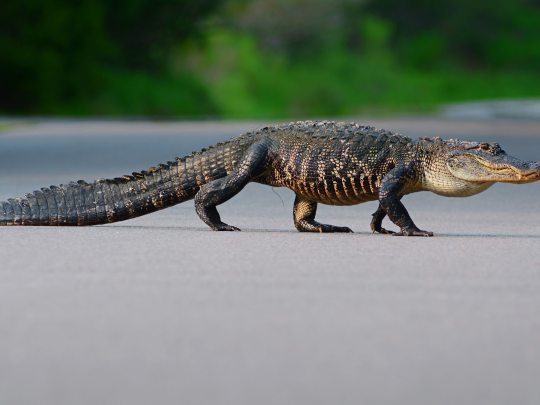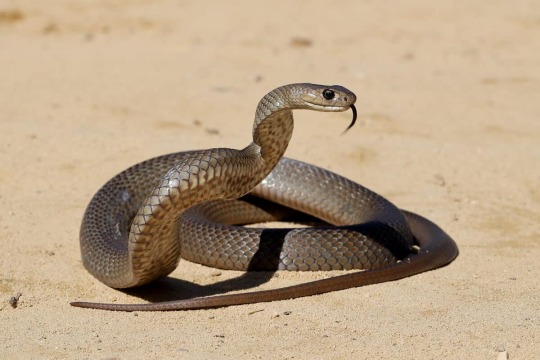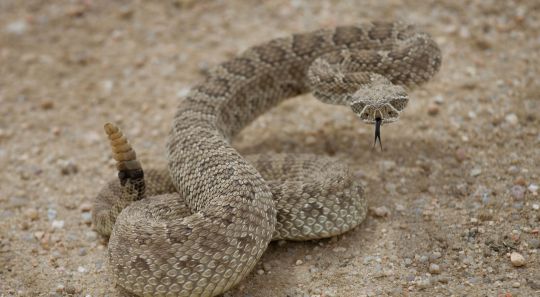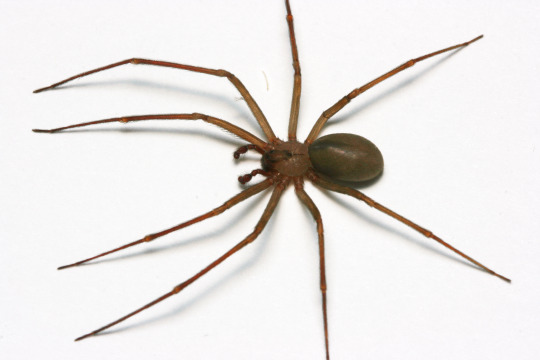My blog is designed to make people become less fearful of dangerous animals and educate them about these fascinating creatures!
Don't wanna be here? Send us removal request.
Text

if the devil saw israel he would hand over his throne.
35K notes
·
View notes
Text

never forget how the mainstream media spread the fake beheaded babies news while completely ignoring the 40,000+ palestinians butchered by israel.
8K notes
·
View notes
Text

if the devil saw israel he would hand over his throne.
35K notes
·
View notes
Text

this year while we all celebrate pride month and celebrate ourselves as well as those who came before us and paved the way for us to do so, we must also think of those in gaza, queer or not, who live every day under a brutal occupation and don’t have that same privilege. happy pride, and may we see a free palestine in this lifetime.
90K notes
·
View notes
Text
Jararaca
Name: Jararaca or Brazilian Pit Viper
Scientific Name: Bothrops Jararaca
Family: Viperidae
Size: 4 feet (1.2 meters) on average
Range: Southern Brazil to Northern Argentina to northeastern Paraguay
Fatalities: One of the most notorious species in Latin America
Conservation Status: Least concern
Fun Fact: Jararacas are part of the lanceheads
Lurking within the Pantanal, a region that ecompasses the world’s largest tropical wetland area, the Brazilian Pit Viper, or better known as the Jararaca or Yarara, inhabits thick, dense, wet forests, savannahs, highlands, and cultivated fields. When human development encroaches upon the Amazon and other tropical forests in Latin America, they start treading on the Jararaca. As a part of the pit viper family and the lanceheads, the Jararaca has a triangular-shaped head, but their color varies greatly among individual snakes, ranging from brown to tan to maroon to yellow. The lancehead snake title consists of all snakes with the genus Bothrops and is characterized by that triangular shaped head. However, many other snakes have triangular heads, particularly venomous ones, that do not fall under the lancehead category like rattlesnakes. The tongue of the Jararaca is black. Like many other snakes, the only way to be sure that a snake is a Jararaca and not another type of pit viper is to count the rows from the midbody.
Oh, and here’s another thing: the Jararaca will bite and is not afraid to. Lancehead bites consist of almost 90% of all snake bites in total in the Americas. Pit Vipers and lanceheads are generally very irritable and are very quick to strike, unlike other species that tend to strike when frightened. And here’s another thing: lancehead venom is extremely potent and has one special characteristic: dropping blood pressure. A Jararaca bite can cause swelling, petechial rashes, spontaneous systemic bleeding, subconjunctival hemorrhaging, and loss of ability to clot blood.
The ability of the Jararaca’s venom to drop blood pressure has been used in various medicines to treat hypertension.

From Britannica
2 notes
·
View notes
Text
Name: American Alligator
Scientific Name: Alligator mississippiensis
Family: Alligatoridae
Size: 8.2 feet, 200 pounds (females), 11.2 feet, 500 pounds (males)
Range: North Carolina to Texas
Fatalities: 442 attacks in the past almost century, 26 were fatal
Conservation Status: Threatened
Fun Fact: The biggest American Alligators can weigh almost a ton
Recently a viral sensation for trying to climb over a South Carolina homeowner’s fence, the American Alligator has earned a reputation of being the face of the American South, particularly Florida. American alligators are the only native large crocodiles found in the United States, however, very few American crocodiles inhabit the southern tip of Florida, in the Everglades. The American Alligator thrives in freshwater lakes, rivers, swamps, marshes, and oftentimes residential areas as well, from North Carolina to the Rio Grande.
The average American alligator has a bite force of 2,000 pounds per square inch, making it one of the greatest bite forces in all of the animal kingdom. The Saltwater Crocodile, a close relative of the American alligator, has the largest bite force measured by any animals at 3,700 pounds per square inch. The American Alligator’s bite can easily tear through flesh, bone, skin, and metal. And if you ever thought that running in a zig-zag would save you from a bite force of 2,000 pounds per square inch, you would be mistaken. The American alligator can run up to speeds of 30 miles per hour in short bursts.
The American Alligator, once driven to near-extinction by a surge in popularity of gator skin, gator skin bags, gator skin belts, gator skin shoes, has now made a comeback due to it being on the Endangered Species list.

From National Geographic
#marine biology#omg#omgpage#deadly#nature#animals#dailydoseofdeadly#dangerous#snake#marine#american alligator#the south#alligators
2 notes
·
View notes
Text
Tiger Shark
Name: Tiger Shark
Scientific Name: Galeocerdo cuvier
Family: Carcharhinidae
Size: Length (10-14 feet), Weight (850-1400 pounds)
Location: Found in warm temperate and tropical waters all over the world
Fatalities: 131 attacks and 34 fatalities recorded in history
Conservation Status: Near Threatened
Fun Fact: The Tiger Shark is the fourth largest shark, behind the Whale Shark, Basking Shark, and Great White Shark
Infamous for tearing Bethany Hamilton’s arm off, the Tiger Shark has a reputation for being in the top three of the species of sharks with the most attacks on humans. Tiger sharks eat anything. And I mean, anything. Tiger sharks have been found with plastic bags, burlap sacks, and even license plates in their stomachs. Anything also means human flesh and bones too. Tiger sharks are known to be aggressive towards humans. As the garbage cans of the seas, Tiger sharks aren’t afraid to sink their teeth into anything, including you. However, most Tiger shark attacks on humans have been a case of mistaken identity. Mistaking a surfer for food.
Tiger sharks and humans tangle quite a bit, as they’re the sharks with the 2nd highest number of attacks on humans, second only to the fearsome Great White. The shallow, coastal waters that the Tiger sharks tend to inhabit puts surfboards and surfers on the menu.
The Tiger shark has one of the largest bite forces in all the animal kingdom, as several hundreds pounds per square inch. This nasty bite is what allows the Tiger shark to tear through anything that crosses its path really: metal, plastic, bone.

From National Geographic
2 notes
·
View notes
Text
Eastern Brown Snake
Name: Eastern Brown Snake
Scientific Name: Pseudonaja textilis
Family: Elapidae
Size: 1.5 -2 meters (5 - 6.5 feet)
Habitat: Southern New Guinea and Australia
Fatalities: Around 2 fatal bites per year
Conservation Status: Least concern
Fun Fact: Brown snake bites (from all species) are the most common cause of snake bite death in Australia
Another member of the Elapidae family comes slithering out from its home of woodlands, grasslands, and heathlands in Northeastern Australia and Southern New Guinea. Like its family members of cobras, mambas, and coral snakes, it does have a big reputation in both emergency rooms and the herpetology world.
The Eastern Brown Snake exhibits brown coloration (wow who could’ve known) with patches of darker pigmentation and a medium length and slender build. Wow daily, so one of the most venomous snakes ever looks like every other snake? Yeah kinda :( . The most distinguishing characteristic of the Eastern or Common Brown Snake is its bite. The color of the Eastern Brown Snake is variable, like almost all other snakes. The most reliable way to identify Brown snakes and the method that herpetologists use is counting the rows of scales on the midbody of snakes (for the eastern brown snake, it’s 17 rows of scales). The Eastern Brown Snake’s neck and body are the same width, making it look like a really long, really venomous worm.
The Eastern Brown Snake has the second most potent venom out of all snakes, second to only its cousin, the Inland Taipan, which inhabits the more arid regions of Australia. The Eastern Brown Snake contains a powerful neurotoxin, which paralyzes the muscles needed for breathing, such as the lungs and diaphragm, causing the victim to asphyxiate to death. Eastern Brown Snake venom also promotes the coagulation of blood (or the blood’s ability to clot). Have you ever scraped yourself and then touched the wound to find little bumps of something almost jelly-like on your cut? That’s a blood clot. It’s basically where blood turns into jelly. I’m pretty sure there’s some issue with your blood turning to jelly all over your body, but all the studies I’ve tried to access are too hard to read and I have to search up every other word or password-blocked. But I’m going to say this: many snake venoms are anticoagulants. They prevent the formation of blood clots and oftentimes, the victim bleeds out. Various snakes have this added side effect in their venoms, especially those in the Elapidae family. The Eastern Brown Snake’s venom is a procoagulant.
If you get bit by an Eastern Brown Snake (and are able to properly identify it as one), it was most likely a dry bite, or didn’t produce any venom. Brown snakes are very timid around humans and will usually stay still or slither away if approached. These are animals who are just trying to live; they’ll only bite a human out of self-defense. However, if you get bit by any snake in Oceania, the American South and West, Latin America, Africa, Asia, you should immediately seek medical help; it’s often very difficult for the normal human eye to differentiate what snake is harmful and which one is harmless. If you are found to have been bitten by a brown snake, antivenom will be administered. And remember, before you decide to cancel that trip to Australia, fatal snake bites in Australia are very, very, very, very rare. Most only occur when a snake feels threatened when being held by someone or is accidentally stepped on.
While the Eastern Brown Snake carries one of the most toxic venoms in all of the animal kingdom, research is being done to use in medicines to promote blood clotting. The University of Queensland is doing studies to create a gel or medicine that can be used to prevent victims from bleeding out in an ambulance or in combat zones by using the procoagulant properties in Eastern Brown Snake venom. Research shows that when this gel is applied to wounds, there’s 5 times less blood loss, and blood clots form 3 times faster than without the gel.

From the Billabong Sanctuary
#marine biology#omg#omgpage#deadly#nature#animals#dangerous#dailydoseofdeadly#snake#marine#brown snake#australia#antivenom#university of queensland
1 note
·
View note
Text
Great White Shark
Name: Great White Shark
Scientific Name: Carcharodon carcharias
Family: Lamnidae
Size: 16-20 feet long, weighs 2-4 tons
Habitat: Coastal or pelagic waters in the North Atlantic, Mexico, South Africa, Australia, and Northeast Pacific
Fatalities: 5 fatal attacks last year
Conservation Status: Vulnerable
Fun Fact: Great Whites are the largest predatory fish
Just when you thought it was safe to go back into the water.
The influence for Hungry Shark games, Jaws, and much more, the Great White Shark is either known to most people as terrifying or misunderstood. Terrifying, for its reputation of attacking surfers, misunderstood, because the likelihood of dying by shark attack or even getting attacked is lower than getting struck by lightning. This isn’t your usual dailydoseofdeadly post with venom, teeth, and what do if you get bit. If you get bit, you should go to the emergency room, it’s not that hard. This post is going to be an education on sharks, their declining numbers, and conservation strategies put into place. I’m all for hemotoxins and bite force, but in a decade, if we don’t start putting conservation into the conversation, there’ll be nothing there for me to talk about.
Overfishing puts over ⅓ of all sharks at risk of extinction. Overfishing is when fish are caught and removed at a faster rate than they can reproduce. But daily, sharks aren’t a typical fish that is caught for consumption. BUT, they do eat fish; fish that’s being removed from the food chain at remarkable rates. Sharks, usually, at the top of ocean food chains and food webs. Removal of anything lower, even the smallest of fish, could affect everything from the tiniest plankton to the biggest sharks and whales. Basically, the sharks don’t have anything to eat, and starvation kills.
Sharks, particularly more open-water ones like the Great White and Mako shark, are hunted for sport and oftentimes kept as trophies. Removing top predators like these can completely turn ecosystems upside down, throwing populations of prey fish and plankton off.
That’s not to say that there are things being done and things that YOU can do too. YOU can buy seafood sustainability. YOU can call your representatives if you live in the United States and advocate for marine protection programs. YOU can be mindful of the fertilizers you put in your yard so toxic chemicals don’t get into waterways and eventually to the ocean. YOU can donate and volunteer with local environmental organizations. YOU can make a change, no matter how landlocked you are, no matter how little a difference it makes, it’s still something.
Image from Smithsonian Institution
#marine biology#omg#omgpage#deadly#nature#animals#dailydoseofdeadly#dangerous#snake#marine#great white shark#conservation#ecology#endangered species#ecosystem#environment#biology
3 notes
·
View notes
Text
Southern Death Adder
Name: Southern Death Adder
Scientific Name: Acanthophis antarcticus
Family: Elapidae
Size: 31-36 inches long
Habitat: Various regions of Australia
Fatalities: At least 5 recorded deaths in the last century
Conservation Status: Least Concern
Fun Fact: Death adders have the longest fangs of any Australian snake
If you happen to cross paths with one of these Aussies, their name tells you what your fate may be. Death Adder. Think about it. Inhabiting Australia and its nearby islands, the death adder is among some of the most venomous snakes in the world. Being a part of the Elapidae family, it shares a family tree with black mambas, cobras, kraits, and coral snakes. And just by looking at some of its relatives, you can already assume what the Death Adder has in its fangs, ready to inject into anyone or anything that seems like a threat… or dinner.
The Death Adder’s distinct appearance includes a triangular, spade-like head, a thick and short body, and a thin tail that it uses to lure prey. The snake is brownish gray with darker rings across the length of its body. Don’t be fooled by the length of this creature though. Even though most Death Adders barely surpass 3 feet long, they carry some of the most potent venom in the animal kingdom, killing every other person they bit before the creation of an antivenom. Like its cousins the mambas, cobras, and kraits, the Death Adder carries a strong neurotoxin that can cause severe paralysis in those envenomated.
If you get bitten, seek immediate medical care.
Even though there is an anti-venom for the bite of a Death Adder, don’t start planning that trip to Australia so quickly right now. Studies by the Australian Snakebite Project show that while Death Adder antivenom does stop the circulation of the venom throughout the body, it does not diminish the neurotoxic effects of the venom until almost a day later. This study also concludes that Death Adder venom is a presynaptic neurotoxin, instead of a postsynaptic one. I’m going to pretend I know what I’m talking about right now because I took AP Biology, but if you want a more in-depth explanation of the difference between pre- and postsynaptic neurotoxicity, I would recommend the Internet. Basically, the synapse is where chemicals (neurotransmitters) that communicate with other neurons are kept. The synaptic gap is a space between two neurons where these neurotransmitters are released. Acetylcholine is the most known neurotransmitter and is responsible for involuntary muscle movement or your reflexes. Presynaptic neurotoxins inhibit or block these neurotransmitters from being released from the synapse. The neurotransmitters don’t even get released. However, with postsynaptic neurotoxins, these neurotransmitters do get released into the gap, but they can't bind to the binding sites on the other neuron to create a neural impulse on the other neuron. The toxins block the binding sites. That’s my explanation, it’s probably not right, but I did try.

Image from the University of Melbourne
#marine biology#omg#omgpage#deadly#nature#animals#dailydoseofdeadly#dangerous#snake#death adder#australia#h2o just add water
4 notes
·
View notes
Text
Boomslang
Name: Boomslang
Scientific Name: Dispholidus Typus
Family: Colubriae
Size: Average 1.2 meters or around 4 feet
Habitat: Native to sub-Saharan Africa
Fatalities: Less than ten people worldwide
Conservation Status: Least concern
Fun Fact: Young boomslangs have large, emerald green eyes
The Boomslang. One of the odder looking snakes within the animal king, with large, emerald green eyes on its small head as a juvenile that eventually turns into large, black eyes as an adult. They do look a little silly. These slender bug-eyed critters hold the title of one of the most deadliest snakes in the world along with more infamous species like the black mamba, inland taipan, and the cobra. Lurking in the bushes and trees of South Africa, waiting for small vertebrae to pass by, the boomslang is the master of disguise. Ranging from bright green to black to rust-red, the boomslang comes in every color you’d think of. Like every YA protagonist, the boomslang is shy, petite, and slender (they shop at Brandy) and have bright green eyes. However, don’t let their size or their awkwardness fool you, the boomslang can finish off a grown adult in less than 24 hours.
Another strange thing about the boomslang: they’re rear-fanged. Meaning that their fangs are towards the back of their mouths on their lower jaws. Being rear-fanged, many herpetologists in the 20th century thought that they were not venomous. For herpetologist Karl Schmidt, though, he met his fate after an encounter with a rear-fanged juvenile. Following assumptions about rear-fanged snakes, Schmidt didn’t think much about the bite at the time. However, within 24 hours, he would succumb to the boomslang’s hemotoxic venom. The venom exhibits a property where the victim loses the ability to clot blood, eventually furthering into external and internal bleeding. The venom is also slow-acting; symptoms and hemorrhaging can be delayed lulling the victim into a false sense of security.
However, if you think you got bit by a boomslang, every dose is a lethal dose. Seek medical attention immediately. Get the antivenom.
It’s the difference between life and bleeding out to death.
#marine biology#omg#omgpage#deadly#nature#animals#dailydoseofdeadly#dangerous#snake#marine#boomslang#africa#brandy melville
2 notes
·
View notes
Text
Prairie Rattlesnake
Name: Prairie Rattlesnake
Species: Crotalus Viridis
Class:
Size: 35 - 45 inches in length and can grow up to 5 feet long
Habitat: Great Plains of the United States
Fatalities: Most of 7,000 recorded snake bites in America, fewer than 5 people die each year
Conservation Status: Least Concern
Cowboy Carter, get ready to strike a match and light up this juke joint!
As one of the most infamous snakes that prowls North America, being printed on everything from Levii’s Jeans to cowboy boots and sunglasses, rattlesnakes play a huge role in western, southern, and Native American culture. These rattlers are native to the Great Plains of the United States (Montana, the Dakotas, Texas, Wyoming, Nebraska, Kansas, Colorado, New Mexico, Oklahoma) and stretches into parts of Canada and Mexico. Lurking prairies (hence the name), grasslands, brushes, and caves, the prairie rattlesnake is an ambush hunter. Sneaking up on mice, birds, and other rodents, humans don’t seem to be on the menu for this cowboy killer. Slithering along the banks of streams and forests, the prairie rattlesnake, typically tan and greenish brown in color, has an iconic head shape: a spade.
A huge part of the folklore, rhymes, and stories woven into American history and the brand of the Wild West, rattlesnakes have sunk their fangs deep into cultures and traditions for centuries. One tradition involves weather-forecasting in Texas; if you flip a dead rattlesnake and it lands with it back up, rain is coming soon. However, if it lands with its belly up, that means drought continues. I’m not sure how accurate this is, but it’s probably more accurate than the apple weather app. In addition to weather-telling, the rattlesnake supposedly also has medicinal properties as told through works in literature. If you had tuberculosis, you were supposed to cut off the head of a rattlesnake, put it in a bottle of rum, and drink it. If you had rheumatoid arthritis, you were supposed to wear a belt of rattlesnake skin. A Native American legend is about a Native American who trained a group of rattlesnakes to play as instruments in a song with him.
However, don’t be fooled by its popularity; it can still pack a punch with a single bite. The prairie rattlesnake’s venom contains both hemotoxins and neurotoxins to create a potent cocktail of debilitating effects for anyone who’s unlucky enough to cross paths with a prairie rattlesnake, but even more unluckier to get bit. Rattlesnake venom can cause myonecrosis, or localized muscle death, which occurs when enough blood cannot reach the muscle. Necrosis starts spreading rapidly throughout the body from the bite site. Another effect of the venom is coagulopathy, or the body’s inability to clot blood. Excessive bleeding occurs. However, most rattlesnake bites are not directly from the venom’s hemotoxic and neurotoxic effects; they’re due to severe anaphylactic shock or inability to get access to proper anti-venom and care. Severe anaphylactic shock is when the body has a severe allergic reaction, causing blood pressure drops and difficulties breathing. Getting a severe allergic reaction to rattlesnake venom is very rare, but it’s a risk for people who have previously gotten bit by one.
Let's say that that snake does rattle you with its venom, do not do any of these things. Rattlesnake venom is very fast acting, and any delay to get medical help could cost you an arm or leg (literally and figuratively, rattlesnake antivenom in the United States is expensive :( ). Do not put ice on the bite, do not try to suck the venom out of it, do not tie off the wound or use a tourniquet. If you get bit, seek medical help immediately.
While no one wants to wear denim on a hike, that pair of Levii’s jeans could significantly reduce the amount of venom penetrated through the material into your body.

#marine biology#omg#omgpage#deadly#nature#animals#dailydoseofdeadly#dangerous#snake#rattlesnake#wild west#cowboy carter#beyonce#tyrant#levis jeans#renaissance
4 notes
·
View notes
Text
Coral Snake
Name: Eastern Coral Snake
Species: Micrurus Fulvius
Class: Reptilia
Size: 2-3 feet long
Habitat: In the United States, from southeastern North Carolina to eastern Louisiana
Fatalities: One death in the past 40 years; 47 human bites reported to Florida Poison Control Centers each year
Conservation: Least Concern
The Eastern Coral Snake lurks in dry, typically sandy areas, ranging all throughout the southeastern chunk of the United States. As a part of the Elapidae family, which contains the well-known cobras and mambas of the Southern Hemisphere, getting bit by a coral snake on your hike might cost you more than 3k for an ER visit. Coral snakes are known to be active during all parts of the day, particularly dawn and dusk. Throughout the year, these little guys tend to be especially active during the fall and spring.
Unlike other snakes, coral snakes are a little shy and awkward. Many Floridan hikers who have had the pleasure (or displeasure, depending on whether they got bit or not) of coming face to face with a coral snake have reported that they are not aggressive towards humans without any provocation. Moral of the story: don’t touch them, they won’t touch you. And now you’re saving 3k and your forearm.
Coral snakes, as told by their name, are very vibrant, exhibiting red, black, and yellow rings on the entire length of their body. Their smooth skin makes them look polished. Looks like someone remembered to wear their moisturizer. Typically, the females are longer than men, who are only 2 feet long, while most females are 3 feet. Short kings, am I right? Now speaking of kings…
If you happen to cross paths with a coral snake (or something that looks like a coral snake?), before deciding to piss your pants, take a look at the color arrangement on the body of the snake. Taking it up north, the king snake, which does look a lot like the coral snake, resides in the barren wasteland from Illinois to Texas, and south to Alabama. They are unlike the coral snake in almost every way except looks. The king snake is not venomous and likes wet areas. If you get bit by a king snake, it’ll probably just hurt, not kill you. Well, how do I figure out if the yellow, red, and black ringed snake near me is venomous or not?? Just remember this simple mnemonic, “Red touch black, safe for Jack; red touch yellow, kill a fellow”.
However, if you end up being the unluckiest person alive and end up getting bitten by a coral snake, get immediate help immediately. That was redundant, but it gets my point across. Spend the 3k on an ambulance ride to the ER; it costs less than the heavy price tag your life wears. Being a part of the same family as the black mamba and king cobra, the coral snakes’ fangs wield an extremely potent neurotoxic venom. This venom attacks the nervous system, characterized by muscle weakness, difficulty speaking, difficulty breathing, difficulty swallowing, paralysis, and potential respiratory arrest. To avoid these effects and potential death, get anti-venom for the toxin immediately. Being quick to get the anti-venom isn’t quick enough. Delayed use of anti-venom for victims who show these symptoms has shown to progress to paralysis within half a day. The one victim of the venom failed to get medical treatment for the coral snake bite.
Just like Taylor Swift said, Florida is one hell of a drug, and if you get bit by a coral snake there, let’s hope that drug is rapidly administered anti-venom.

Image from The University of Florida, Florida Museum
#marine biology#omg#omgpage#deadly#nature#biology#taylor swift#the tortured poets department#florida#florence and the machine#coral snake
6 notes
·
View notes
Text
Brown Recluse
Name: Brown Recluse
Species: Loxosceles reclusa
Class: Arachnida
Size: About the size of a US Quarter, though most vary in size
Habitat: South, Central, and Midwestern United States
Fatalities per year: 7 deaths per year (for all types of spiders in the US)
Conservation status: Not extinct
Everyone thinks that all the dangerous spiders are in Australia. But watch your back. One of the most dangerous critters in the world may just be lurking in your basement. The brown recluse, also commonly known as the violin spider, is found in the Midwestern and South central United States. This creepy crawler prowls in dark, isolated areas outdoors and indoors. A brown recluse spider could be spinning its web in the corner of your room right now, and you wouldn’t even notice it. Don’t panic yet, though. It’s actually pretty easy to differentiate a brown recluse spider and your regular daddy long legs.
The brown recluse exhibits a distinct symbol on its body. A violin with its neck pointing towards the abdomen of the spider. So if you do happen to see one of these in your house, maybe it’s time to pack your bags. Extermination or just stepping on it may be a less drastic decision, however. While the size varies between different spiders, the average brown recluse is ¼ of an inch to 1 inch big. You could literally step on it. But don’t think of yourself so superior just yet. This little critter’s small size allows it to crawl into laundry and under blankets. Some rude awakening, I guess. Brown recluses can be anywhere from tan to deep brown in coloration, and this color is usually homogeneously spread across the spider’s legs and body. So now you know how to identify a brown recluse. But what happens when you luck out so badly that you end up bitten?
Good News! The bite probably won’t kill you, but you might wish you were dead. Brown recluse venom is hemolytic, meaning it will try to destroy your red blood cells, which may be a little problematic. This venom is particularly lethal in children, causing seizures and organ failure. The scariest thing is that you may not even feel a brown recluse bite when it happens. Let’s say, hypothetically, you get bit in your sleep. You wake up the next day with an insect bite and probably assume it was a mosquito, which is a topic for another day. As the days go by, you think, “Hmm? Why did this mosquito bite turn into a blister?” A couple more days later, the blister starts to get darker and hurts more. Finally, the venom causes necrosis at the bite site, causing your blister to turn black in color. Throughout these days, you’ve been developing a fever and nausea as well. For adults, the problem in a brown recluse spider bite isn’t the bite itself. It’s the infections that follow afterwards.
It’s often very difficult to differentiate a brown recluse bite from a billion other things. It gets even more difficult when you don’t see the spider that bite you. However, if you are bitten, you should call Poison Control. There’s no treatment for bites currently, and most treatment is symptom specific. You should wash the bite with soap and water, and then apply a bandage to the area to prevent infection. If infection does develop, you’ll probably be prescribed antibiotics. The most simple way to avoid a bite is to never come into contact with a spider. Easier said than done when the spider is the size of a quarter. One way is to regularly visit and disturb dark and isolated areas in your house. Another way is to pick up your laundry and store your shoes inside the house. Wearing gloves when uncovering pieces of wood or doing other work outside can prevent accidentally irritating one of these nasty nellies.
And if you do get bitten, just be glad it wasn’t a black widow.

3 notes
·
View notes


